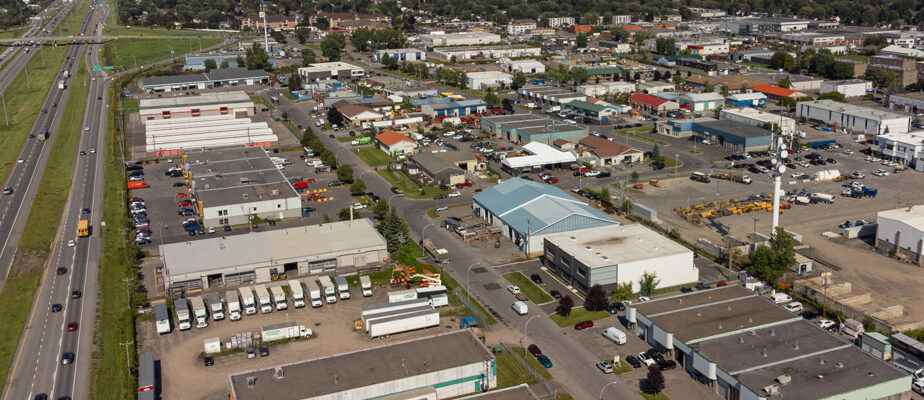The evolution of industrial activity has repercussions on the aging business parks of the Montreal region. To remain attractive to investors, the Montreal Metropolitan Community (CMM) is releasing $3 million with the aim of modernizing industrial zones while aiming for their eventual decarbonization.
The industrial park of the future wants to be an environment with multiple vocations where the person can work, of course, but also have fun and why not live there. Nuisances linked to heavy manufacturing are becoming rarer than before, an observation that opens the door to the neighborhood of functions.
We must think about greening first-generation industrial zones, making them denser and improving their public transport service.
The old industrial parks have no choice but to adjust to the new dynamic with a boost from the public authorities to avoid an exodus of jobs, a phenomenon which comes with a cost associated with urban sprawl .
The Montreal Metropolitan Community is launching the Program for the Revalorization of Industrial Spaces aimed at accelerating the ecological transition of parks, land and industrial buildings in Greater Montreal. Developed jointly with the Ministry of Economy, Innovation and Energy, this initiative represents an investment of over $3 million, including $2.8 million from the Government of Quebec.
“This is the first phase of an offensive that we are putting in place to transform our industrial spaces,” explains Sylvain Giguère, chief economist and head of economic development at the CMM, over the phone.
The money will be used to finance the plan to revalorize the industrial spaces of the 14 MRCs and agglomerations of the territory. Organizations such as Montréal International and Investissement Québec International will play a supporting role.
Vacant lots targeted
The courses of action were identified in the 2022-2031 Metropolitan Economic Development Plan, unveiled last November. Three priorities emerge: removing the constraints of land that is still vacant, optimizing and accelerating the energy transformation of industrial parks, and requalifying the built heritage.
“The program comes to implement the actions of the Metropolitan Development Plan. It will be a matter of identifying the actions to be carried out quickly and specifying the expected results,” explained Mr. Giguère.
According to the latest inventory of industrial land carried out by the CMM in 2019, the territory has 3,895 hectares of vacant industrial land. About 70% of these spaces (2,688 hectares) are burdened with constraints.
“Our target is to lift restrictions on 60% of the land that is subject to it by 2041,” says Mr. Giguère.
Created in 2001, the Communauté métropolitaine de Montréal is a planning and coordination body bringing together 82 municipalities and totaling 4.1 million people. The CMM has jurisdiction in the areas of land use planning, economic development, social housing, public transport and the environment.
Learn more
-
- 1.2%
- Availability rate of industrial premises in the Montreal region at 4e quarter 2022
Source: CBRE
